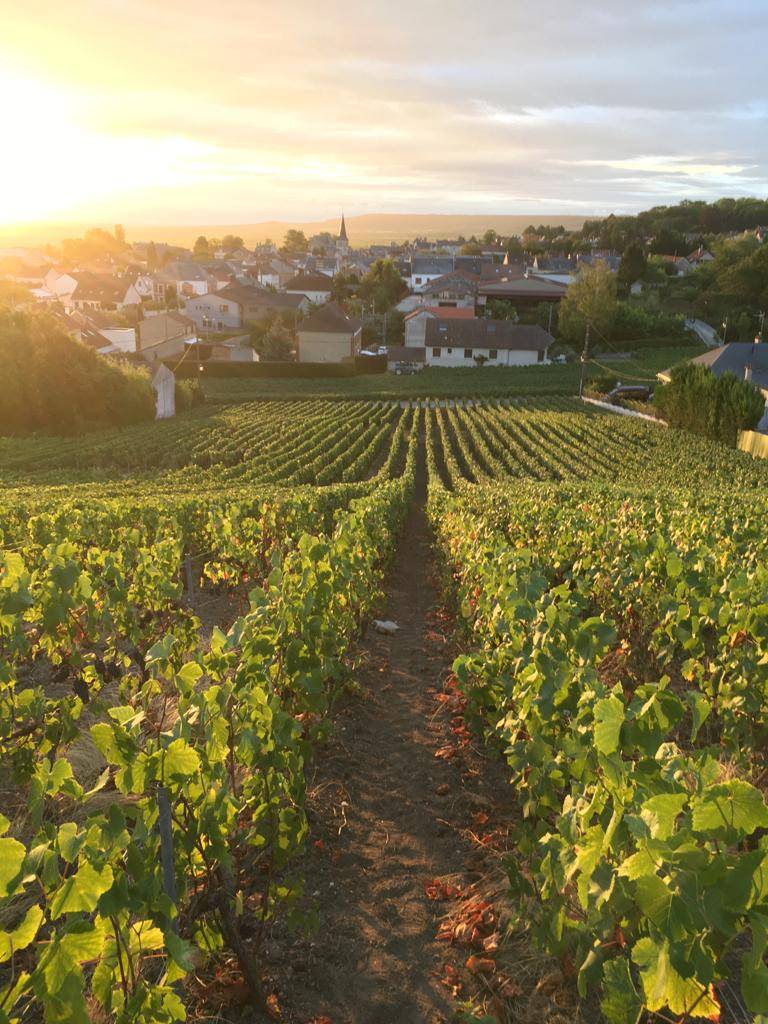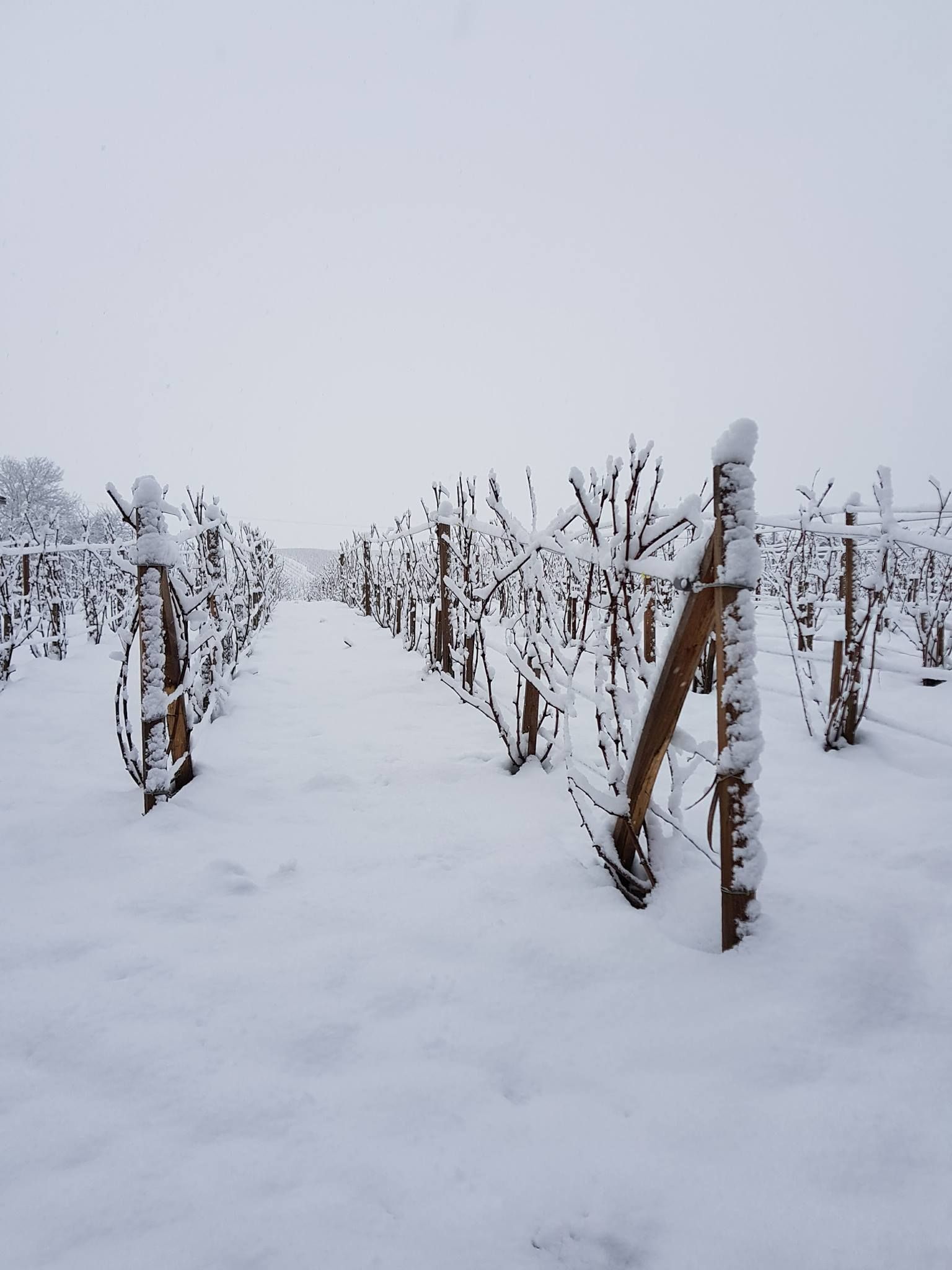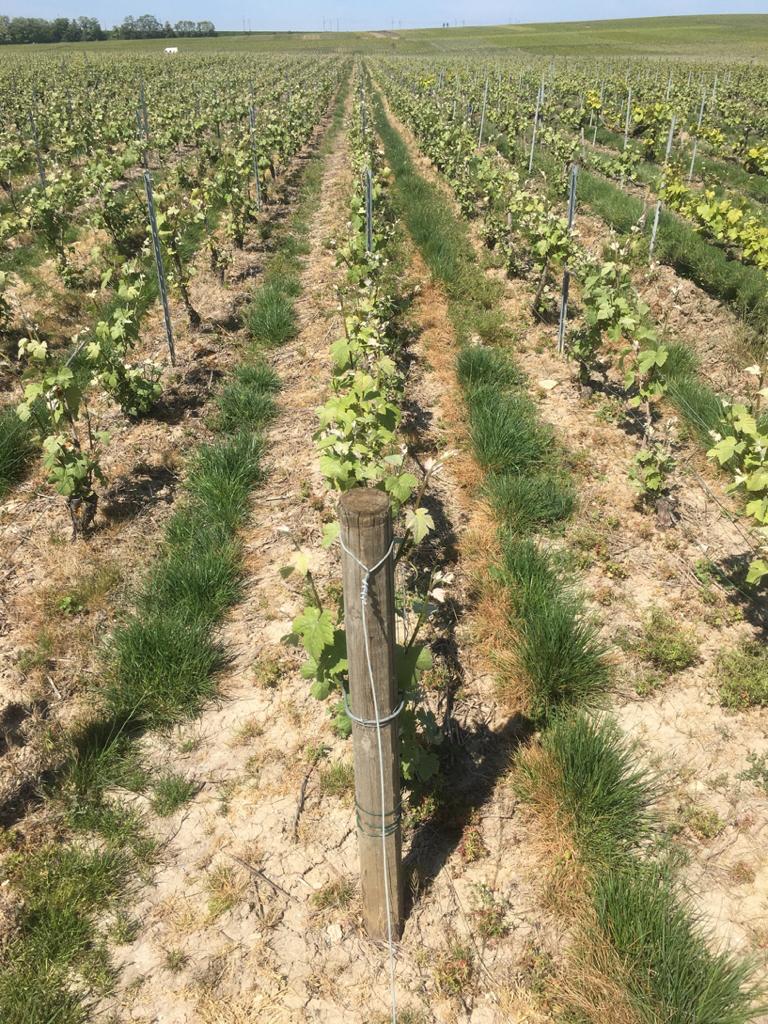Our Terroir
The 7 exclusively « Premier Cru » hectares of the Maurice Lepitre vineyard are located in the Rilly-la-Montagne terroir.
The proximity of our plots of land to the estate and their unity of place, a particular feature in Champagne, characterize us and allow us to give the vines special care.


The champagne terroir is the northernmost winegrowing region in France. Our region has a continental climate with oceanic influences. On the one hand, the climate has a reputation for its cold temperatures with winter frosts but it can also become very hot with strong sunshine in summer, accompanied by regular and moderate rainfall. The average annual temperature reaches 10°C ( 50°F) which is the limit of the vine’s cold tolerance.
First of all, it is important to point out that Rilly-la-Montagne is the northernmost village of the Montagne de Reims and is therefore exposed to a cold climate and a humid westerly wind! As a result, our vineyards suffer and grow in adversity, a hostile environment of cold and humidity. The roots plunge into the soil to protect themselves and draw nutrients from the soil. That is why the height of our vines are lower compared with the other French vineyards such as the Rhone valley or Provence. The suffering of our vineyard creates the complexity of the wines. This specific cold climate results in wines that have a very high level of acidity, part of the reason why champagne ages well and one of the elements that separates champagne from any other sparkling wine.
In addition, at the top of our village is a forest called “la Montagne de Reims” which creates a microclimate. This forest helps to soften the harshness of the winter cold by creating a “barrier” to the west wind cooling down the temperatures of the summer drought to allow for optimal conditions for the champagne winegrowing!
“Moreover, at the top of our village is a forest called “la Montagne de Reims” at the origin of a microclimate. This forest contributes to soften the rigor of the winter cold by making a “barrier” to the west wind and refreshes the temperatures of the summer drought to allow optimal conditions for the champagne viticulture!”
Our specific relief
Firstly, let’s look at the exposure of the vines to the sun. In our latitudes, the sun’s rays arrive at an angle. To optimize the sunshine, ideally, the vines have to be planted on the hillsides, to favor a good ripening of the berries.
In Champagne, it is customary for the vine to suffer in order to produce quality grapes. It must undergo moderate hydric stress to favour the concentration of sugars and polyphenols in its grapes. The plantation on hillsides and the south and south-east exposure go in this direction by optimizing the drainage and by limiting the water supply to the vine. The hillsides have a higher altitude, so the climate is cooler. So how does this affect the Champagne wine ? It changes it’s freshness and acidity.
“The hillsides have a higher altitude, so the climate is cooler. What are the effects of this on the wine of Champagne? Its freshness and acidity.”

Frequently, visitors to the Champagne region who stroll through our vineyards are surprised to find little pointed shells on the floor, as if they were on the beach! They are evidence of very ancient times when the sea covered the plain of Champagne. Over the millennia, these marine animals deposited a large layer of limestone forming the champagne chalk of our subsoil in which the shells of these marine molluscs could not dissolve but rose slowly over the centuries to ground level. Astonishing to see nowadays!
The soils, depending on the Champagne region, are composed of clay, marl and various types of limestone.
This diversity of soil contributes to distinguish the wine of the Montagne de Reims by its typicity.
On the one hand, the clay-limestone soil and the limestone subsoil of our terroir reflect the rays of the sun that bring warmth and light to the vine.
On the other hand, the chalk is also a water reservoir that guarantees a sufficient supply for the vine and ensures a good drainage of the soils as the clay structure, very favourable to the hydration of the vine.
Finally, the soil is an important factor in the gustatory quality of the wines which leads to different characteristics in the mouth. For example, in our wine, we can taste a hint of grapefruit or even lemon doubled with mineral notes, all created by the limestone subsoil from our terroir.

